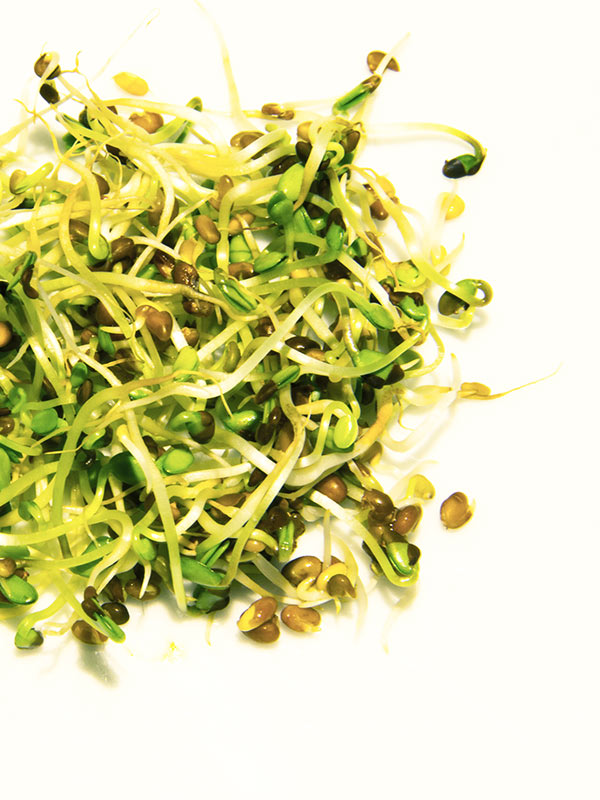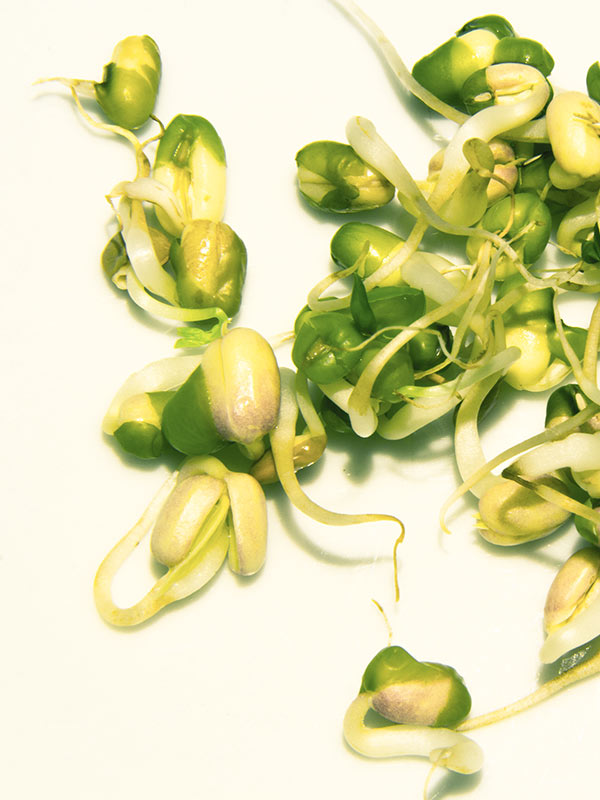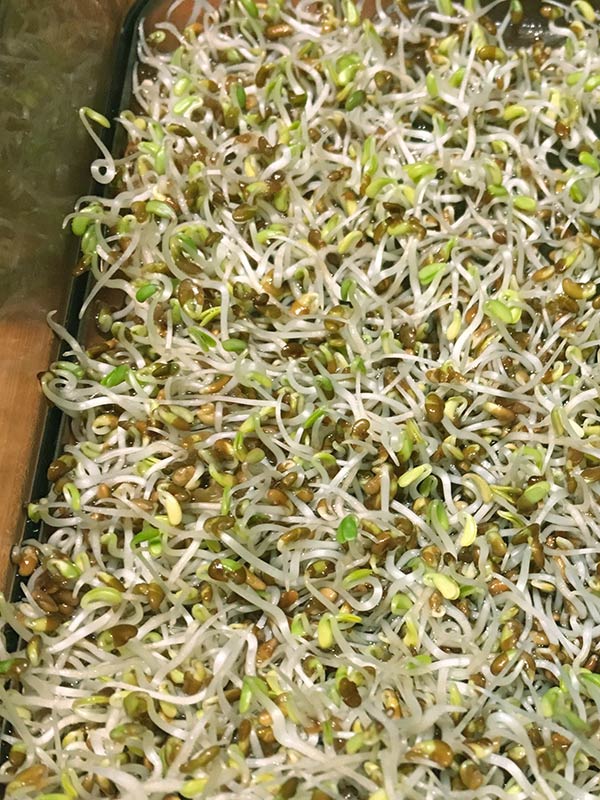Sprouting Super Foods
Sprouted superfoods with seeds, beans and growing micro-greens. Sprouts are a convenient and highly effective way of enriching the diet.


Sprouts
Sprouts are a convenient and highly effective way of enriching the diet. They are used in many cancer treatment diets.
As well as the specific nutrients mentioned below they are rich in amino acids, and enzymes and are an alkaline forming food, unlike most grains and seeds in their un-sprouted state.
They encourage the production of pancreatic enzymes which break down the mucus around cancer cells an enable the immune system to destroy them.
They are a cheap and easy way to add protein to the diet, since a teaspoon of seeds can produce about half a pound of sprouts.
There is also no waste produced and most importantly they can be grown without any equipment (except a thoroughly washed jar), soil or sunlight.
One can guarantee that they are produced organically and it is possible to live on them as the sole food source if one chooses to.
Examples of nutrients in specific sprouts
They all contain protein, fibre and phytohormones such as kinetin which help with tissue repair and production of substances such as dopamine in the human organism so are highly repairing and supportive to growing and healing.
| Aduki beans | Vit B 1+2, Iron, Potassium |
| Alfalfa | D, E, K, C, Iron Phosphorous |
| Barley | B1+2, C |
| Black eye beans | B1, C Iron Niacin |
Broccoli sprouts have been shown to contain high levels of sulphoraphane, a cancer fighting substance at 20 -50 times the amount found in the mature vegetable.
| Chick peas | B1, C Iron |
| Fenugreek | A, C Iron |
| Lentils | B 1+2 Iron |
| Lima Beans | B1+2 Iron Niacin |
| Mung Beans | A, C ,E Choline |
| Oats | B 1+2, C Iron |
| Radish | A, B1, C Iron Phosphorous |
| Rice | B1+2, C Iron |
| Soya | B, E |
| Sunflower | C, E |
Microgreens
Microgreens are similar in that they are very young and have been shown to be packed with 4-10 times as much nutrition as mature plants. They differ from sprouts in that the seeds are sown on tissue or into trays or compost and allowed to grow to a height of about 3-5 centimetres before trimming for use.
Several crops can be taken from a single tray and once they are gone over the compost and root mat can be added to the compost bin, adding valuable nutrients there also.
There is a huge range of plants that can be grown this way: Mustard, cress, kale, lettuces, chicory, pea sprouts, radish, carrot leaves, turnips, sunflowers, fenugreek, basil and many other herbs such as dill, aniseed, fennel, coriander, parsley, any herb that one would use the green leaf from.
“You are so beautiful to me” – Alfalfa

One can also grow wilder greens like dandelion, purslane, rocket, plantain (I have recently dealt with the excess of fluffy beautiful dandelion heads in the garden by harvesting the seed heads to grow micro-greens), evening primrose; again any of the plants one would harvest as wild greens.
This also gives the possibility of growing some of these earlier in the season or later into the winter. However, I have observed that a lot of the wild greens have an innate quiescent period during the winter where they will not germinate unless give a deal of heat and light in an artificial environment.